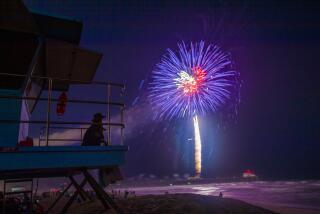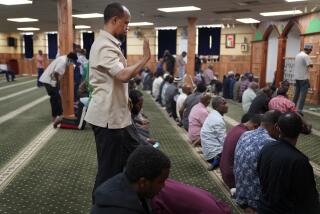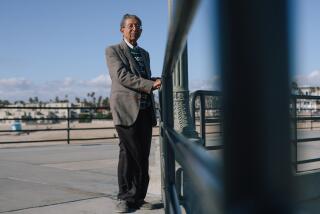Abridged Shinto Rite Gets Tentative OK From Torrance
- Share via
In an apparent change of heart, Torrance city officials have tentatively decided to allow portions of a Japanese ceremony to be performed at the city’s Cultural Arts Center.
The city earlier barred most of the ceremony, arguing that it was a Shinto religious ritual that would violate the constitutional separation of church and state. But, in the wake of a letter from the American Civil Liberties Union, the city has drafted a proposal to permit four of the ceremony’s five parts at the opening of a Japanese classical arts program Jan. 10-11.
That decision could signal the end of an emotional, often rancorous feud pitting city officials against the event’s organizer and some Los Angeles-area artists. The debate focused on whether that ritual was religious or cultural, and what sorts of programs would be allowed at the 2-month-old, $13-million Cultural Arts Center.
But the city attorney and the event’s organizer, Mikko Haggott-Henson, have settled on guidelines for the centuries-old ritual, known as the kokera otoshi.
“We compromised so there would be no misunderstanding,” Haggott-Henson said.
City Atty. Kenneth L. Nelson said Tuesday that he is waiting for the ACLU to review the guidelines--”just to make sure we have concurrence in every corner”--before declaring the matter closed.
Nelson would not characterize the guidelines as an agreement. Instead, he simply has received assurances that no priest will take part in the ceremony, he said, adding, “That was the key issue.”
Under the guidelines, only one part of the original ceremony--involving a Shinto priest who was to purify the theater by shaking a paper wand--will not be allowed.
Three other parts can be restored: the traditional sprinkling of salt, the presentation of ceremonial drumsticks and a poetry reading.
The fifth part, a ceremonial dance, was not questioned by the city.
Haggott-Henson had canceled those three parts after the city told her in a Dec. 9 letter that the poem and props such as the salt and drumsticks would not be allowed.
But a turning point in the dispute came last week when ACLU lawyer Carol Sobel wrote Nelson that she did not consider the props and poem to be overtly religious.
And Councilman Bill Applegate said he became involved in the dispute at Haggott-Henson’s request, arranging a meeting Dec. 18 between her and Nelson.
Applegate said he felt the city’s interpretation of the ceremony was too narrow. He also became concerned that the interpretation could limit other events at the new center, which was built primarily with city funds.
“We built this for people to use, so that they could see other things,” Applegate said.
The controversy has been especially discomfiting for city officials because of their close ties to Japanese business.
The new Cultural Center, for instance, received a $500,000 donation from Toyota Motor Sales USA Inc., and Epson America Inc. donated an elaborate $350,000 Japanese garden at the heart of the center.
News of the city’s opposition to the kokera otoshi stirred opposition from local art experts, including Gerald D. Yoshitomi, the influential executive director of the Japanese American Cultural and Community Center in Los Angeles. Yoshitomi wrote the city, asking that the ritual be restored.
Mayor Katy Geissert said she heard from some people who accused the city of being anti-Japanese.
One city official who labeled the ritual as religious was City Councilman George Nakano, the council’s sole Japanese-American. Nakano this week sharply criticized Haggott-Henson’s lobbying to have the ritual restored.
He described Haggott-Henson’s actions as harassment, and added, “Many of us felt we were being subjected to far more (lobbying) than we could tolerate.”
But Haggott-Henson said the city brought the problem upon itself.
City officials concluded the ritual was unconstitutional without consulting her or experts familiar with the kokera otoshi, Haggott-Henson said.
“What is wrong is, they don’t want to communicate things. They decide things without talking to the people who know,” she said.
Several Japanese arts experts said they never before heard of a city barring rituals such as the salt-sprinkling.
Kabuki expert William Malm, a music professor and associate in the Center for Japanese Studies at the University of Michigan, said the sprinkling of salt is a symbolic gesture of purity. He compared it to the hanging of Christmas decorations or the ribbon-cutting for a new highway.
“If the city will agree to pull down all the decorations at City Hall,” he said, “. . . then (performers) at this city theater shouldn’t throw salt.”
More to Read
Sign up for Essential California
The most important California stories and recommendations in your inbox every morning.
You may occasionally receive promotional content from the Los Angeles Times.













